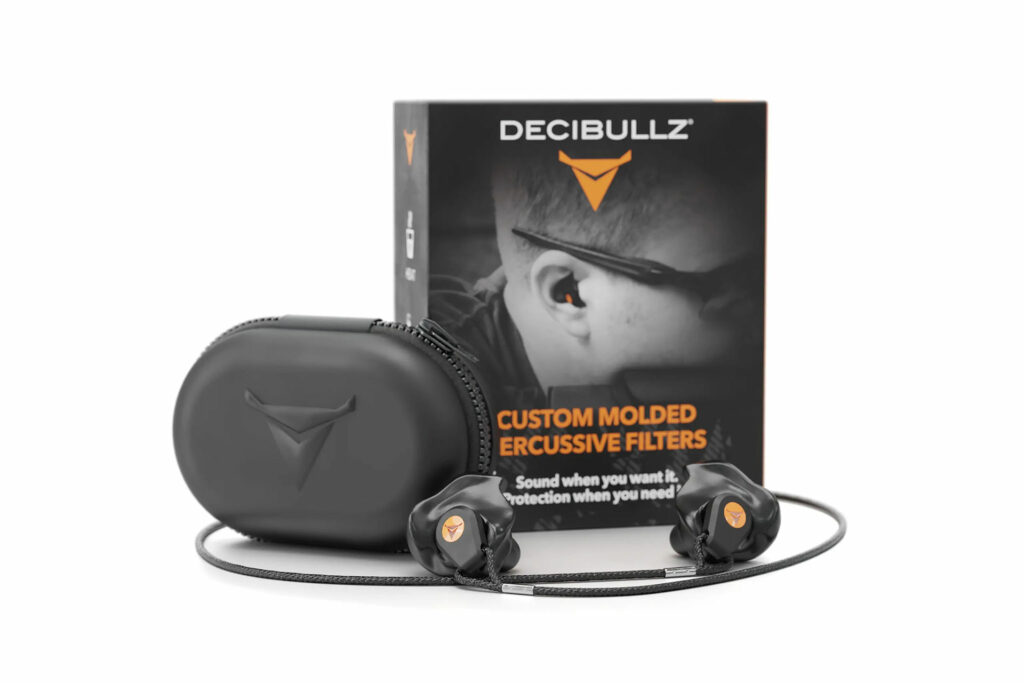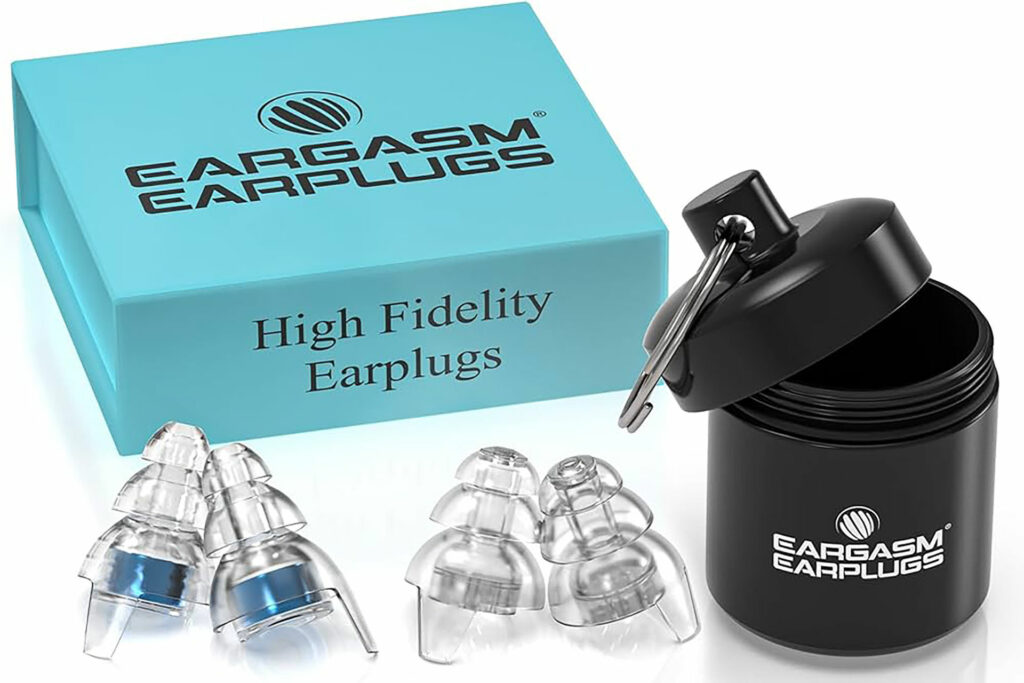In a world where silence is golden but noise is embraced, protecting your hearing is truly a defensive art – especially for audiophiles. From the roar of traffic to the potentially harmful volume settings on the devices that live dangerously close to our eardrums daily, our ears are under siege 24/7 and constantly at risk of damage. It’s not merely a single instance of excessive volume that causes damage; rather, it’s the gradual, repeated exposure to loud sounds that ultimately takes a toll on our ears. Hearing loss is no joke and can sneak up on audiophiles over time, often rearing its ugly head just as HiFi enthusiasts reach their golden listening years.

But fear not, we have a simple, no-nonsense survival guide to help you navigate this cacophonous world and potentially extend the life of your most prized piece of gear – your ears. Here are some practical ways to protect your audiophile hearing in daily life…
- Use hearing protection, even in scenarios that don’t appear particularly risky on the surface. If you, like me, share the American millennial dream of one day paying off your student loans, retiring at age 80 and cashing in your shares of GameStop once and for all to build your endgame audiophile system, we’ll need functioning ears to achieve this goal, right? Loud noise can be a real menace to your hearing, whether it’s a sudden burst of sound waves (in my line of work, we call this impulse or impact noise) or years of steady exposure. Anything over 85 decibels (which isn’t crazy loud) can wreak havoc on your ears—permanently. Common culprits include live concerts, which can range from 94-110 decibels, lawnmowers at a whopping 106 decibels, action movies at 74-115 decibels, and even gunshots or fireworks displays, say, on the Fourth of July, which can max out at an eardrum-busting 160 decibels (keep in mind, a single, one-second episode of impact noise above 140 decibels can permanently damage your hearing). The solution? Purchase and carry a pair of HiFi earplugs, such as those made by Eargasm or Decibullz (check out my review here). There are several options across all price points. Some, like the Professional HiFi Filter Plugs from Decibullz (review coming soon), even feature custom molding technology that allows a precise fit to the shape of your ear canal, and come with specialized filters that allow sound in, but limit the excessive loss of fidelity. I never leave home without mine, and I wouldn’t be caught dead in a movie theater or live music venue without them resting comfortably in my ear canals.
- Utilize technology to increase listening safety. There are some great apps available for download, both free and paid, that offer sound detection capabilities and feedback regarding your immediate listening environment. Apps like TooLoud (iOS and Android) translate outside noise into an easy-to-read user interface that indicates the loudness and danger level of the sound around you. This can come in handy during concerts or movies, or in other scenarios where you aren’t sure if earplugs are necessary. Other apps such as Volume Control Pro allow you to set specific decibel limits for music, movies, and audiobooks on your devices, so you never have to worry. Just plug in, play, and enjoy.
- Use “ear math” during longer listening sessions. Safe listening time is reduced by half for every three-decibel increase above 85 decibels. For instance, you can safely listen to sounds at 85 decibels for up to eight hours. If the noise level rises to 88 decibels, the safe listening time drops to four hours. And if it goes up to 91 decibels, you should only listen for two hours. So be sure to pay attention to the overall volume during your listening sessions, and keep track of time. I recommend using one of the volume control apps listed above, and then setting a timer to give your ears a breather as often as possible. This simple yet sustainable listening practice could have positive, long-term implications on the health and preservation of your hearing, and it doesn’t take much effort at all.
- Consider over-the-ear headphones versus in-ear monitors or earbuds. I am convinced that hearing loss levels are set to rise substantially in the coming years due to the popularity of AirPods and other similar products. I love mine, but physiologically speaking, placing a noise source directly into the external auditory meatus (ear canal) this close to the tympanic membrane (ear drum) is significantly riskier than the alternative. Traditional headphones, especially those with an open back, allow for more natural sound distribution into and around the ear. Additionally, a pair with good isolation will reduce the need to increase volume to block out outside noise, reducing the overall strain on the ear and allowing for much safer listening. I know this isn’t always convenient or possible, especially while on the go, or in bed next to a sleeping spouse, but alternating usage of in-ear monitors and over-the-ear headphones seems like a reasonable compromise.
- Get your hearing tested professionally every year or two. Although hearing tests are generally more sensitive to the frequency range of human speech (approximately 100 to 6,000 Hz for practical purposes), it’s still wise to consult an audiologist to ensure your hearing is in optimal condition. This becomes increasingly important as we age, particularly for men between the ages of 50 and 69, who are at the highest risk of sensorineural hearing loss. Taking proactive steps like this to monitor and protect your hearing health can significantly enhance the overall prognosis of your hearing. Loss of hearing can be gradual, but can easily sneak up on an unsuspecting audiophile as he or she progresses in age. Performing a proper audiometric assessment will give you some insight into specific problem areas, and may serve as a barometer of the overall health of your ears. It’s no different than doing an annual visual or dental exam. This can be instrumental in identifying problems early, allowing the listener to be proactive in their health preservation journey, rather than reactive and thereby forced to deal with permanent issues that could have been avoided.

As an audiophile, your ears deserve a front row seat, not a backstage pass. It’s time to start thinking about our ears like we do the rest of our bodies – as vital organs that have a lifespan, and if used and abused, will prematurely and permanently fail. As a speech and hearing professional myself, I sympathize with my patients who have lost some to all of their hearing, and often wonder what it must be like. At this stage in my life, I can’t imagine not being able to sit down at the end of a busy day and escape into my favorite music, even for only a few minutes at a time. I know hearing loss will get me someday, but I’m hopeful that the steps I’m taking now will allow me to enjoy this hobby longer than if I hadn’t.
It’s easy to take listening to your favorite music for granted but, as with most things in life, you truly don’t know what you have until it’s gone. It’s best to focus on prevention, protection, and preservation to increase the odds that you’ll still be rocking out (responsibly) well into your elder audiophile years.
Publisher’s Note:
Be it wearing headphones or listening to your audiophile system, if you ever get the inkling to turn down the volume, that is likely a good idea. Seriously, how often do you actually think to turn down the volume? It is pretty rare, right? If the idea ever crosses your mind, it is likely good to back the volume down a bit. It doesn’t matter if you are listening to your main audiophile system or in the car jamming out to some Van Halen or, as Eric mentions, while listening to your headphones. Volume is one thing. Volume over time is even more damaging. Cranking the volume down (rare, I know) is a really good solution that is rarely ever discussed in the audiophile hobby, but it is almost always a good idea.
What do you do to protect your hearing (if anything)? Do you ever think to turn the volume down a little bit? We won’t judge you here but if you are comfortable share with us what steps that you take to protect your hearing already? We love to hear from you in the comments below!



